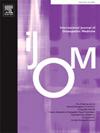评估 YouTube 视频中有关徒手医学/疗法的信息质量
IF 1.5
4区 医学
Q2 MEDICINE, GENERAL & INTERNAL
引用次数: 0
摘要
本研究评估了与手动医学/治疗相关的 YouTube 视频的教育质量和可靠性,以确定这些视频是否适合信息寻求者,以及在手动治疗教育中的潜在用途。方法 对 113 个与手动医学/治疗相关的 YouTube 视频进行了横断面分析。对视频特征进行了评估,包括喜欢、不喜欢、观看次数、持续时间和发言人简介。使用视频功率指数(VPI)、全球质量量表(GQS)、《美国医学会杂志》(JAMA)标准和修改后的 DISCERN 工具对视频的受欢迎程度、教育质量和可靠性进行了评估。与 "一般信息 "视频相比,"手法 "和 "移动/拉伸/检查 "视频获得了更多的点赞和观看次数。视频时长与 JAMA、GQS 和 mDISCERN 分数呈正相关,表明时长较长的视频教育质量更高。结论这项研究强调了内容创作者提高手工医学/治疗视频教育质量的必要性。以实际应用为导向的内容很受欢迎,高质量的视频资源可作为徒手治疗教育中实践教学的重要补充。 对实践的启示1.本研究对 YouTube 上的徒手医学/治疗视频进行了全面评估,结果表明来自不同专业发言人的视频在教育质量和可靠性方面没有明显优势。3.尽管整体教育质量和可靠性处于中等至偏弱的水平,但以实际应用为重点的视频(如操作和移动/拉伸/检查)更受欢迎,观看次数也更多。这表明,此类内容可作为徒手疗法培训的有效补充,而且在向患者演示徒手疗法的相关程序、增强他们对治疗方案的理解和参与方面也很有价值。4.通过提供高质量、可靠的资源来补充传统的教育方法,尤其是在演示实用技术方面,提高视频内容的质量可极大地促进徒手疗法教育。本文章由计算机程序翻译,如有差异,请以英文原文为准。
Evaluating the Information Quality of YouTube Videos on Manual Medicine/Therapy
Objectives
This study evaluates the educational quality and reliability of manual medicine/therapy-related YouTube videos to determine their suitability for information seekers and their potential use in manual therapy education.
Methods
A cross-sectional analysis of 113 YouTube videos related to manual medicine/therapy was conducted. Video characteristics, including likes, dislikes, view count, duration, and speaker profile, were assessed. Popularity, educational quality, and reliability were evaluated using the Video Power Index (VPI), Global Quality Scale (GQS), Journal of the American Medical Association (JAMA) criteria, and modified DISCERN tool.
Results
No significant differences were found among speaker groups (physicians, physiotherapists, osteopaths & chiropractors) in assessment parameters. Videos on “Manipulation” and “Mobilization/Stretching/Examination” received more likes and views than “General Information” videos. Video duration positively correlated with JAMA, GQS, and mDISCERN scores, indicating higher educational quality in longer videos. However, overall educational quality and reliability were moderate to weak.
Conclusions
The study underscores the need for content creators to enhance the educational quality of manual medicine/therapy videos. Practical application-oriented content is popular, and quality video resources can serve as a valuable complement to hands-on instruction in manual therapy education.
Implications for practice
- 1.This study provides a comprehensive evaluation of YouTube videos on manual medicine/therapy, highlighting no significant superiority in educational quality and reliability among videos from different professional speakers.
- 2.This research fills a gap by offering a broad perspective on the educational value of these videos, which has not been explored in such depth previously.
- 3.Despite moderate to weak overall educational quality and reliability, videos focusing on practical applications such as manipulation and mobilization/stretching/examination are more popular and frequently viewed. This suggests that such content might serve as an effective supplement to manual therapy training and also proves valuable in demonstrating to patients the procedures involved in manual therapy, enhancing their understanding and engagement with treatment protocols.
- 4.Enhancing video content quality could significantly benefit manual therapy education by providing high-quality, reliable resources that complement traditional educational methods, especially in demonstrating practical techniques.
求助全文
通过发布文献求助,成功后即可免费获取论文全文。
去求助
来源期刊
CiteScore
2.20
自引率
36.80%
发文量
42
审稿时长
3 months
期刊介绍:
The International Journal of Osteopathic Medicine is a peer-reviewed journal that provides for the publication of high quality research articles and review papers that are as broad as the many disciplines that influence and underpin the principles and practice of osteopathic medicine. Particular emphasis is given to basic science research, clinical epidemiology and health social science in relation to osteopathy and neuromusculoskeletal medicine.
The Editorial Board encourages submission of articles based on both quantitative and qualitative research designs. The Editorial Board also aims to provide a forum for discourse and debate on any aspect of osteopathy and neuromusculoskeletal medicine with the aim of critically evaluating existing practices in regard to the diagnosis, treatment and management of patients with neuromusculoskeletal disorders and somatic dysfunction. All manuscripts submitted to the IJOM are subject to a blinded review process. The categories currently available for publication include reports of original research, review papers, commentaries and articles related to clinical practice, including case reports. Further details can be found in the IJOM Instructions for Authors. Manuscripts are accepted for publication with the understanding that no substantial part has been, or will be published elsewhere.

 求助内容:
求助内容: 应助结果提醒方式:
应助结果提醒方式:


